The Real Irish Republican Army, or Real IRA (RIRA), was a dissident Irish republican paramilitary group that aimed to bring about a United Ireland. It was formed in 1997 following a split in the Provisional IRA by dissident members, who rejected the IRA's ceasefire that year. Like the Provisional IRA before it, the Real IRA saw itself as the only rightful successor to the original Irish Republican Army and styled itself as simply "the Irish Republican Army" in English or Óglaigh na hÉireann in Irish. It was an illegal organisation in the Republic of Ireland and designated as a proscribed terrorist organisation in the United Kingdom and the United States.

The Omagh bombing was a car bombing on 15 August 1998 in the town of Omagh in County Tyrone, Northern Ireland. It was carried out by the Real Irish Republican Army, a Provisional Irish Republican Army (IRA) splinter group who opposed the IRA's ceasefire and the Good Friday Agreement, signed earlier in the year. The bombing killed 29 people and injured about 220 others, making it the deadliest single incident of the Troubles in Northern Ireland. Telephoned warnings which did not specify the actual location had been sent almost forty minutes beforehand but police inadvertently moved people toward the bomb.

Sir Anthony George Berry was a British Conservative politician. He served as Member of Parliament (MP) for Enfield Southgate and a whip in Margaret Thatcher's government.
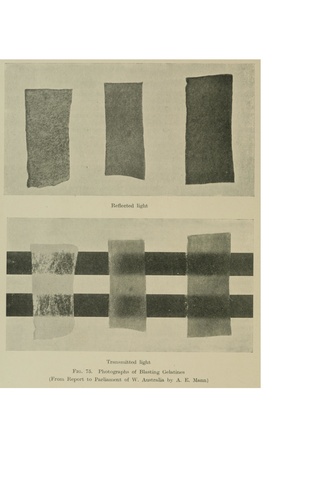
Gelignite, also known as blasting gelatin or simply "jelly", is an explosive material consisting of collodion-cotton dissolved in either nitroglycerine or nitroglycol and mixed with wood pulp and saltpetre.

On 12 October 1984, the Provisional Irish Republican Army (IRA) attempted to assassinate members of the British government at the Grand Hotel in Brighton, England. A long-delay time bomb was planted in the hotel by Patrick Magee before Prime Minister Margaret Thatcher and her cabinet arrived for the Conservative Party conference. Five people were killed, including the Conservative MP and Deputy Chief Whip Sir Anthony Berry, and a further 31 were injured. Thatcher narrowly escaped the explosion.
Gilbert "Danny" McNamee is a former electronic engineer from Crossmaglen, Northern Ireland, who was wrongly convicted in 1987 of conspiracy to cause explosions, including the Provisional Irish Republican Army's (IRA) Hyde Park bombing on 20 July 1982.
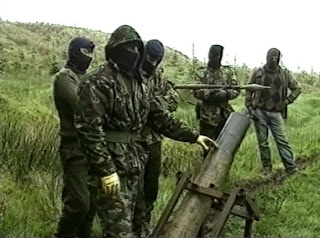
From 1969 until 1997, the Provisional Irish Republican Army (IRA) conducted an armed paramilitary campaign primarily in Northern Ireland and England, aimed at ending British rule in Northern Ireland in order to create a united Ireland.
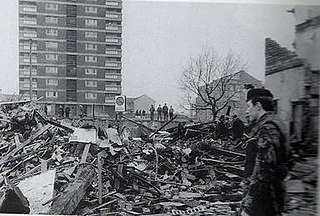
On 4 December 1971, the Ulster Volunteer Force (UVF), an Ulster loyalist paramilitary group, detonated a bomb at McGurk's Bar in Belfast, Northern Ireland, frequented by Irish Catholics–nationalists. The explosion caused the building to collapse, killing fifteen Catholic civilians—including two children—and wounding seventeen more. It was the deadliest attack in Belfast during the Troubles.

The Grand Brighton Hotel is a historic Victorian sea-front hotel in Brighton on the south coast of England. Designed by John Whichcord Jr and built in 1864, it was intended for members of the upper classes visiting the town and remains one of Brighton's most expensive hotels.
The Troubles were a period of conflict in Northern Ireland involving republican and loyalist paramilitaries, the British security forces, and civil rights groups. They are usually dated from the late 1960s through to the Good Friday Agreement of 1998. However, sporadic violence continued after this point. Those that continued violence past this point are referred to as "dissident republicans and loyalists". The Troubles, internationally known as the Northern Ireland conflict, claimed roughly 3500 lives.
Martin McGartland is a former British informer who infiltrated the Provisional Irish Republican Army (IRA) in 1989 to pass information to RUC Special Branch.

The Miami Showband killings was an attack on 31 July 1975 by the Ulster Volunteer Force (UVF), a loyalist paramilitary group. It took place on the A1 road at Buskhill in County Down, Northern Ireland. Five people were killed, including three members of The Miami Showband, who were one of Ireland's most popular cabaret bands.
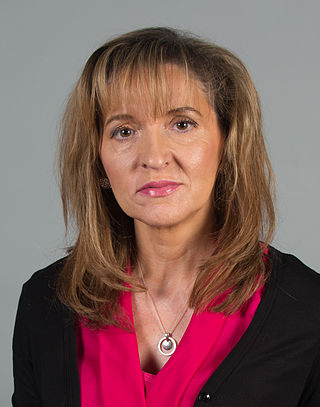
Martina Anderson is an Irish former politician from Northern Ireland who served as Member of the Legislative Assembly (MLA) for Foyle from 2020 to 2021, and previously from 2007 to 2012. A member of Sinn Féin, she served as a Member of the European Parliament (MEP) representing Northern Ireland from 2012 to 2020.
This is a timeline of actions by the Irish republican paramilitary groups referred to as the Real Irish Republican Army and New Irish Republican Army. The Real IRA was formed in 1997 by disaffected members of the Provisional IRA. Since July 2012, when Republican Action Against Drugs (RAAD) and other small republican groups merged with it, the group has been called the New IRA; although it continues to call itself simply "the Irish Republican Army".
Joanna Cynthia Berry is a British peace activist and public speaker. She is the daughter of the Hon. Sir Anthony Berry, who was killed by the IRA in the Brighton hotel bombing on 12 October 1984. The bomb was planted by Patrick Magee, whom Berry publicly met in November 2000 in an effort at achieving reconciliation as envisioned in the wake of the Good Friday Agreement.

The dissident Irish republican campaign began at the end of the Troubles, a 30-year political conflict in Northern Ireland. Since the Provisional Irish Republican Army called a ceasefire and ended its campaign in 1997, breakaway groups opposed to the ceasefire and to the peace agreements have continued a low-level armed campaign against the security forces in Northern Ireland. The main paramilitaries involved are the Real IRA, Continuity IRA and formerly Óglaigh na hÉireann. They have targeted the Police Service of Northern Ireland (PSNI) and the British Army in gun and bomb attacks as well as with mortars and rockets. They have also carried out bombings that are meant to cause disruption. However, their campaign has not been as intensive as the Provisional IRA's, and political support for groups such as the Real IRA is "tending towards zero".
Events from 1999 in England
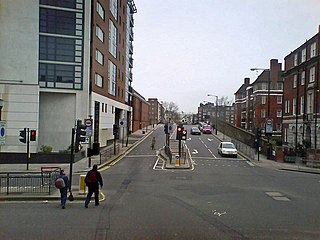
The Chelsea Barracks bombing was an attack carried out by a London-based Active Service Unit (ASU) of the Provisional IRA on 10 October 1981, using a remote-controlled nail bomb. The bomb targeted a bus carrying British Army soldiers just outside Chelsea Barracks. The blast killed two civilians and injured 40 people, among them 23 soldiers.
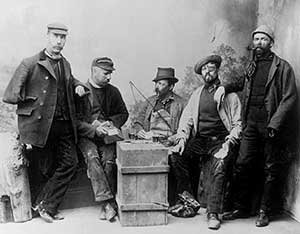
Special Branch was a unit in the Metropolitan Police in London, formed as a counter-terrorism unit in 1883 and merged with another unit to form Counter Terrorism Command (SO15) in 2006. It maintained contact with the Security Service (MI5) and had responsibility for, among other things, personal protection of (non-royal) VIPs and performing the role of examining officer at designated ports and airports, as prescribed by the Terrorism Act 2000.












